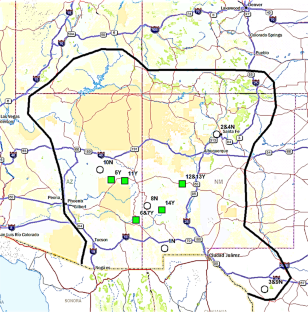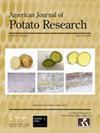Colorado Potato Beetle (Leptinotarsa decemlineata) Prefer Solanum jamesii Populations on which they Were Originally Observed in the Wild
Abstract
Plant preference in agricultural pests is a prerequisite for expansion onto cultivated crops, but there has been limited research on how an insect determines host plant suitability. We investigated Colorado potato beetle Leptinotarsa decemlineata (CPB) performance on various populations of the wild potato Solanum jamesii (jam), with which it has overlapping natural range in the southwest USA. Herbivory was measured in no-choice feeding assays in the greenhouse and common garden field plots in Wisconsin. The jam populations were categorized according to whether CPB had been observed to be present in the wild in germplasm collection records. Herbivory on all jam populations was very low compared to the tuberosum cultivar control. In the no-choice greenhouse assay, all jam were equally consumed by CPB. But in field plots where choice was allowed, CPB were significantly more attracted to jam populations on which CPB had been observed in the wild. Although documenting the presence of CPB on wild jam populations was non-systematic and qualitative in germplasm collecting expeditions over multiple years, that observation does appear to have some value in predicting which jam will be more attractive to CPB in Wisconsin field conditions.


 求助内容:
求助内容: 应助结果提醒方式:
应助结果提醒方式:


